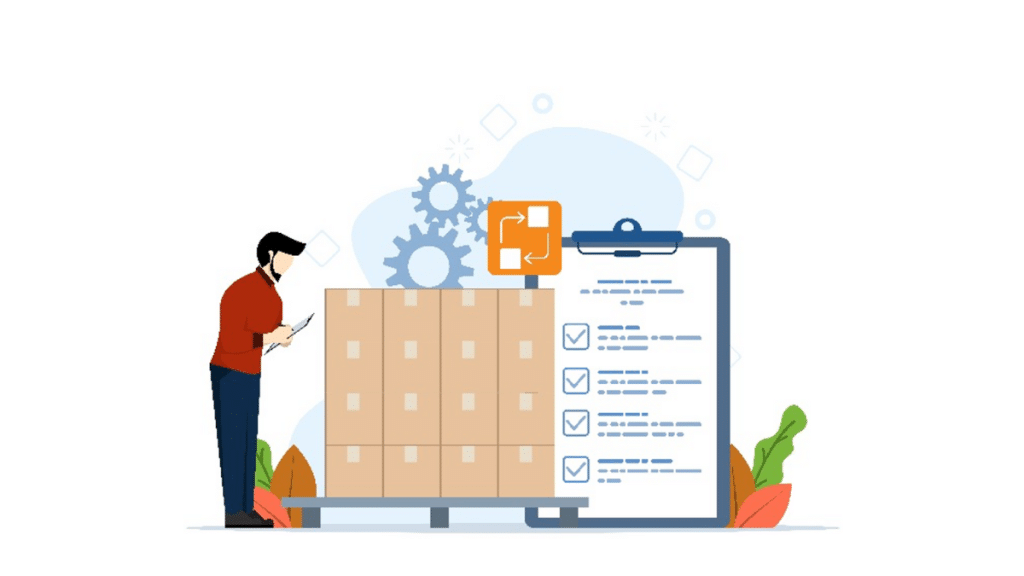According to McKinsey, delays in processing international trade documents contribute to shipment slowdowns of more than 20%, and add 5–10% in extra administrative overhead. Every hour lost to manual handling impacts customer commitments, inventory flow, and operational cost.
- How do supply chain teams handle data accuracy when managing thousands of shipment documents daily?
- Are legacy OCR tools still enough for international logistics workflows that change format and language frequently?
- What’s the simplest and most accurate method for automating trade documentation end to end?
This post explains how KlearStack supports fast, reliable, and template-free automation for complex supply chain document scenarios. With integrated models like the Kuehne-Nagel OCR, it brings scalable precision to document-heavy workflows.
What Is Data Extraction in Supply Chain?
Data extraction in supply chain involves converting information from logistics documents into structured data that can be used by business systems. These documents are critical to customs clearance, shipment tracking, invoicing, and compliance reporting.
Documents can be highly variable—even the same document type may look different across vendors, locations, or partners. Manual processing becomes both slow and inconsistent.
KlearStack uses AI-based automation to extract structured data from documents like shipping invoices, bills of lading, delivery manifests, and customs forms. It eliminates templates and rule-based systems, making extraction accurate and adaptable.
Common Documents Extracted by KlearStack
- Bills of Lading (BOL)
- Commercial Invoices
- Purchase Orders
- Delivery Notes
- Customs Declarations
- Certificate of Origin
- Packing Lists
KlearStack automates these across formats—PDFs, images, scans, and email attachments—making data extraction in supply chain easier and faster.
Why Manual Document Handling Slows Supply Chains
Manual documentation is not just time-consuming. In logistics, it directly leads to shipment delays, compliance risks, and miscommunication.
Errors Add Up
With even a 2% error rate, high-volume logistics teams face hundreds of data mismatches each month. This affects billing, compliance, and inventory planning.
Time-Intensive Processes
It takes hours to manually extract data from complex documents—especially in multi-lingual, multi-format environments. Every delay compounds downstream.
Regulatory Pressure
Trade compliance needs consistent, accurate records. Any mismatch in invoice totals, product details, or HS codes can delay customs clearance or trigger audits.
With KlearStack, supply chain teams avoid these issues through AI-based automation that adapts to changing formats and volumes.
Integration of Kuehne-Nagel OCR Model into KlearStack’s Platform
KlearStack integrates the Kuehne + Nagel OCR model into its document intelligence platform. This OCR model is designed specifically for logistics-related documentation, helping recognize and extract data from trade documents with consistent structure and field accuracy.
By layering KlearStack’s AI and validation systems on top, this integration offers high-precision processing for global shipping environments.
Why This Integration Helps Supply Chains
Logistics forms are not uniform. They differ based on carrier, country, and purpose. The kuehne-nagel ocr model addresses structured OCR needs, while KlearStack adds logic, learning, and integration into ERP or transport systems.
Capabilities Unlocked
- Handles documents in multiple languages and layouts
- Extracts and validates fields like consignee, shipment value, and customs data
- Generates structured data for direct use in shipping, billing, or compliance tools
This combination improves accuracy and reduces processing time, especially for high-volume logistics operations.
How to Extract Data from Trade Documents with AI
Trade documents can be scanned, unstructured, or contain handwritten fields. Traditional software struggles with variability. KlearStack uses AI that learns document behavior over time.
Step-by-Step Process
1. Upload the Document: PDFs, images, scans, and emails are accepted without pre-processing.
2. KlearStack Analyzes Layout: The AI identifies blocks like totals, line items, sender details, and dates.
3. Data Validation: Where confidence is low, the system flags fields for human review.
4. Data Export: Final outputs are delivered to ERPs, WMSs, or analytics dashboards via APIs.
This removes the need for manual data entry or rule templates, making it ideal for complex logistics environments wondering how to extract data from trade document workflows without hassle.
Key Benefits of KlearStack for Supply Chain Teams
KlearStack supports high-accuracy document automation without dependency on layout or format. It works across departments—customs, billing, procurement, and shipping.
Template-Free Extraction
Unlike tools that require fixed layouts, KlearStack adapts to any document, including vendor-specific or region-specific versions.
Scalable for All Sizes
Whether your business handles 100 or 10,000 documents per day, the platform scales without affecting performance or accuracy.
Built for Logistics Use Cases
KlearStack focuses specifically on supply chain document types. It’s not a generic OCR tool. It integrates with leading transport and logistics systems for fast downstream workflows.
Conclusion
Document workflows affect every part of the supply chain—from customs to billing. Manual handling not only takes time but also exposes businesses to compliance and accuracy risks. KlearStack offers a smarter way forward.
Why KlearStack Stands Out:
- Integrates models like Kuehne + Nagel OCR for specialized document processing
- Delivers 99% field-level accuracy across logistics documents
- Reduces processing time by up to 80%
- Offers direct API integration with existing logistics and ERP platforms
KlearStack is built to help logistics teams move faster, with fewer errors and more confidence in their documentation.
FAQs
What types of documents can KlearStack extract data from in logistics?
It processes invoices, bills of lading, customs forms, packing lists, and more in various formats.
Is the Kuehne-Nagel OCR model developed by KlearStack?
No. KlearStack has integrated this model to improve structured document recognition in logistics workflows.
Can KlearStack handle documents from different vendors or in multiple languages?
Yes. The AI adapts to varied formats and supports multi-lingual document processing.
Is it suitable for small and medium-sized freight companies?
Yes. It scales based on volume and does not require large teams or complex setups.
